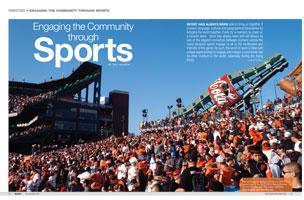
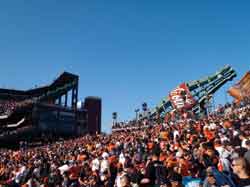 |
| © Eric Broder Van Dyke - Dreamstime.com |
Sport has always been able to bring us together. It crosses language, cultural and geographical boundaries by bringing the world together, if only for a moment, to cheer on a favorite team. Sport has always been and will always be one of the biggest connectors between humans across the world because sports engage us all in the excitement and intensity of the game. As such, the world of sport is filled with unique opportunities to engage and impact a community like no other medium in the world, especially during the trying times.
Let's look back over our recent history here in the United States. On Tuesday September 11, 2001, the U.S. suffered one of the most devastating moments in our country's history, and this September, people all around the world will take a moment to recognize this day and reflect back on where they were when this happened. Stadiums across the country will take a moment to recognize those who were lost, first responders, our military personnel, elected officials, ordinary working citizens and many others on that horrific Tuesday morning.
This day, this moment, this environment will be the ultimate engagement of community, and it will become so through the vehicle of sports. Why? Because of people in the sports community care: they are passionate, they are loyal, but most importantly, they are key members of a community. They are moms, dads, brothers and sisters. They are coaches and players. They are business leaders, elected officials and the work force of a community. They are you and me!
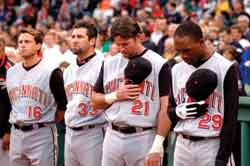 |
| © Jerry Coli - Dreamstime.com |
Why is the above paragraph relevant to the topic we are discussing? After that sad and defining day in our country's history the president of the United States told the United States community that we needed to get back to our "normal" way of life and many of the things he referenced as "normal" had to do with sports.
Colleges and universities needed to resume their athletic seasons, the World Series, Olympics and NFL season had to go on, fans needed to fill the stadiums and travelers had to continue to travel. The president was telling the U.S. community that sports play a significant part of our normal way of life and creating a defining attribute to so many communities across the country.
Sport is a unifier of people (referred to as a community). Sports allows for the creation of a common identity within a certain culture of people. Sports can ignite passion, loyalty and global community enthusiasm. A perfect example is the state of Maryland: when the Terrapins, Ravens, Redskins and Orioles are playing well, our cities, our counties and our state have a higher level of energy and enthusiasm, a positive vibe of communication, and a bounce in the step to the walk of the communities we all belong too. It too can have the opposite effect to the persona of a community should the season not live up to the expectation that was set forth by a team, a league, an organization or the community as a whole.
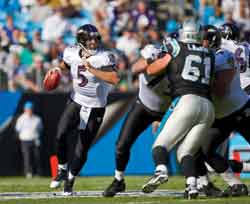 |
| © Walter Arce - Dreamstime.com |
Engaging a community through sports can mean many different things to many different people, but I always go to the old adage "it takes a village" to make something good or bad happen. In the world of sports, engaging the community can be and is multi-faceted because of the classic cause and effect baggage that comes with every event. The sports event is usually the cause and the effect (hopefully positive) is the impact on the community at a variety of levels. A perfect example of the dynamic of engaging the community through a cause/sport and getting a positive effect is the 2009 World Football Challenge at M&T Bank Stadium.
On July 31, 2009 the first ever soccer match -- and international soccer at that -- was held on the recently laid grass pitch at M&T Bank Stadium and featured European powerhouses Chelsea and AC Milan. Over 72,000 people attended the match (the stadium's capacity is 71,008) making it the largest attended event in stadium history. The cause: a soccer match; the effect: over 72,000 people from across the globe invaded the city of Baltimore, creating city-wide sell-out of room nights, the largest grossing day in some of our attractions history, traffic jams, full restaurants and a whole lot more.
| Photo courtesy of Mahanga |
Terry, you say, where's the community engagement? The engagement started when we knew we had the opportunity to host a significant international sporting event.
First, we had to engage the sport-specific community -- in this case, the soccer community, to ensure we had their buy-in to support ticket sales, to provide support personnel and that we were not infringing on anything significant in their (soccer) environment here in Maryland.
Second, we had to engage the hotel and tourism community to ensure there would be room to house everyone. Not only did we have to make sure there were rooms that met each teams' expectations but also be mindful of the swarms of fans that would invade the city from across the state, country and pond.
And as every good event planner knows, after ensuring that the masses will have a place to lay their heads at night, the next step is to make sure there is plenty for them to do during the waking hours -- whenever that may be -- to enhance the local economy. We needed to ensure that we could entertain our audience at our attractions, in our restaurants and in our bars, but most importantly, we wanted to ensure we could shine the best light on our city, region and state.
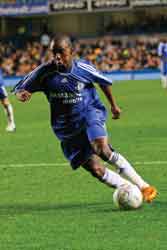 |
| © Danieldaviesphoto - Dreamstime.com |
The third community we had to engage was our public safety and security community. Now that we had the opportunity to entertain over 72, 000 people, we needed to ensure that they were safe getting here, safe once they arrived and safe while they were here to play.
The forth community we had to engage was the downtown corporate community since we needed their support and understanding of what was about to happen. The cause is the event and the effect on the corporate community was new traffic to their community, new people to their local establishments, etc. They now had to contend with a new infusion of people in and about their town in late July. In addition, July is already a busy convention and tourism month in Maryland, but the support was there.
Lastly, but probably the most significant community was that of the media. Media plays a very significant role in ensuring that the activity you are now investing in and hosting is perceived and seen in the best light. We needed to ensure the media had access to the event, the vision and the stories necessary to put our destination on the map. The media holds the reins on how an event is portrayed to people across the globe and we needed to guarantee our event was portrayed in the best light.
I take a moment to translate why all this is relevant- the $19.9 million in economic impact, the highest grossing day in several of our famous Inner Harbor attractions history, the legacy to the soccer community, but more importantly, it was the door opener for Maryland to be a contender in the U.S. bid for the 2018/2022 FIFA World Cup™. It help change the identity of a city, region and state as a soccer "player," an environment that just six months earlier had been just a fantasy to several organizations.
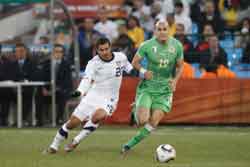 |
| © fstockfoto - Dreamstime.com |
Back to how sports can engage a community. Obviously, the above brief case scenario shows you just a small window into the various communities that are affected when a larger community determines they want to pursue an opportunity. But there is a whole other ideal of engaging the community through sport. I call it the legacy. The legacy of hosting the big event is what is left behind after the teams go home, the fans depart and we all get back to our normal routines. The legacy in the scenario above is that we raised the awareness of a sport in our city, region and state. We showed the global sport community that we are in the game to win future opportunities.
It also raised the bar of expectation for the sport itself. We were now a potential U.S. World Cup host destination in the largest single sports event in the world; that's the legacy this one event had. But in my world, the legacy is that we now have new community partners, new sports organization and more tourism agencies looking at us to join their community to support the fight in recruiting more events, retain what is already there and most importantly, engage in their community at large.
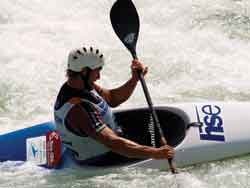 |
| © Tiziano Casalta - Dreamstime.com |
Sports have a way of impacting a community. Sports have a way of rallying a community. Sports have a way of setting a tone for a community. Sports have a way of financially and socially impacting a community, and that impact can be measured in many, many ways.
The impact sports can have on a community is amazing. It can come in many shapes and sizes. A few examples of the impact: youth participation, employment, volunteerism, social awareness and plenty of outreach opportunities.
Recently, I was in Garrett County, Maryland where the International Canoe Federation was conducting a site visit for the Deep Creek 2014 Canoe Slalom World Championships at the Adventure Sports Center International. The foundation was being set for a total community engagement opportunity at the highest level. In this case, the entire state of Maryland and the canoe world constitute the community of this event.
I leave you with this thought: Engaging a community through sports can be one of the most beneficial accomplishments and significant benefits an event can have on your life, and its legacy can be the defining moment in your community. People identify with sports, they use sports as a vehicle to educate, develop and socialize within their community both young and old. Whether you're a participant, supporter or just a fan, sports will be the ultimate community connector or in this case, we can think of it as 'the engager.'
In conclusion, sport is a vehicle to engage a community like no other business sector in our society! Sports are a great cause and in most cases, the effect is positive and extremely rewarding on many fronts.

